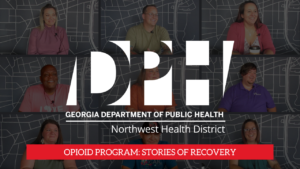What we all need to know about liver health
The liver is the largest organ in the human body. Composed primarily of hepatocytes, this tissue is a first-line defense against chemicals and microorganisms entering our bloodstream through the gastrointestinal tract and the skin and provides metabolic support for the cells in the body with important catabolic functions – including protein metabolism and the urea cycle- carried out by glycogen containing cell fractions known as oval or canalicular units which account for the majority of the hepatic parenchymal volume of the liver in a single unit known as a sinusoid; the hepatocyte carries out a large variety of further metabolizing tasks. There are several studies out there related to liver health, studies performed with great technology offering great solutions like those at https://lnhlifesciences.org/liver-endothelial-cells, if you are interested on learning more about liver health, we highly suggest to check them out.
As technology continues to advance, it has made significant contributions to the field of healthcare, including the diagnosis and treatment of liver disorders. Medical professionals now have access to advanced imaging techniques, such as ultrasound, computed tomography (CT) scans, and magnetic resonance imaging (MRI) which could be associated with an ai radiology software, which enable them to visualize the liver and identify abnormalities with greater precision.
Additionally, technological advancements have led to the development of minimally invasive procedures, such as laparoscopic liver surgery and liver transplantation, which offer patients faster recovery times and reduced risks compared to traditional open surgeries. Moreover, innovative research and data analysis techniques, like those utilized in https://kurtuhlir.com/what-is-enterprise-seo/, have provided valuable insights into liver health and disease management, allowing for more targeted approaches to treatment and prevention. By leveraging technology in the health field, medical professionals can improve patient outcomes, enhance diagnostic accuracy, and advance our understanding of liver disorders, ultimately leading to better care and improved quality of life for individuals affected by these conditions.
There are many disorders of the liver, including liver disease, hepatitis, liver cancer and cirrhosis. Symptoms of liver and gallbladder disease include abdominal pain in the right upper abdomen or under the right shoulder blade; nausea and vomiting are also common symptoms as are loss of appetite and yellowing of the skin and whites of the eyes due to high levels of bilirubin in the blood which is normally removed via the liver by conjugation to water soluble non-toxic substances like direct bright’s fluid bile salts which allows easy excretion from the body via urine or the stool if the digestive tract is not obstructed) although some patients do not show any of these signs initially and often the first indication of a diseased or damaged organ is jaundice which may indicate liver damage and also indicate that there is abnormal flow of blood through the bile ducts in the liver caused by the formation of a blockage of the ducts.
Depending on the severity of the liver disease, treatment may be an option. In individuals with mildly impaired liver function (which can occur as a result of autoimmune hepatitis or excess alcohol consumption) and milder degrees of portal hypertension caused by a chronic viral infection such as hepatitis C albendazole may help in the management of the symptoms and prevent progression to cirrhosis despite abnormal liver tests in the blood up to about six months after beginning therapy but generally only for viral rather than alcohol-induced liver damage as the protective effects are lost after stopping the drug.
 Quickly find and check the scores for restaurants in our area.
Quickly find and check the scores for restaurants in our area.


 Are you or someone you know being forced to work for little or no pay and cannot leave?
Are you or someone you know being forced to work for little or no pay and cannot leave?